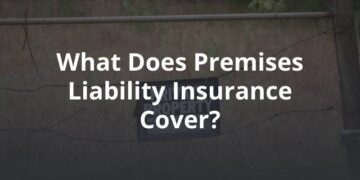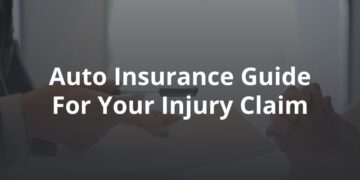Your safety and well-being depend on one of the most important elements of existing in a society — the idea that we are all looking out for each other, even in the most basic of ways.
This is not an unspoken rule. Many of the laws and regulations that govern our daily activities are there to ensure that people can go about their lives cooperatively: sharing the road, resolving conflicts, and respecting property. When people’s actions cause harm — even if it is not by an intentional, criminal act — courts may be asked to step in and determine if they are responsible for paying damages. Read on to learn more about the difference between negligence and liability in a personal injury case.
What Is Negligence?
Negligence is a legal failure to behave with a reasonable level of care. Determining whether or not a person’s behavior is negligent depends on what the courts determine most reasonable people would do under similar circumstances. This failure to behave is characterized by:
- Actions. Behavior that harms another person or creates an environment that results in harm, like texting while driving.
- Omissions. A failure to take action that results in harm to another person, like failing to maintain a staircase that ultimately results in injury.
In a personal injury case, establishing negligence requires that four elements are met in order for the plaintiff, or the injured person, to win a case against the defendant, or the person who caused the injury):
- Duty. The defendant is supposed to have acted in a particular way given the circumstances, such as a driver paying attention to the road.
- Breach of duty. Something the defendant did or did not do, such as falling asleep behind the wheel of a car.
- Damages. Injuries, hardships, and losses suffered by the defendant.
- Proximate cause. The proof that the breach of duty resulted in the injuries determined by whether or not a reasonable person should have known their actions were dangerous.
In a negligence case, it is often true that the defendant trusts the plaintiff to do their part — their duty — to keep them safe. You do not have to know the person to trust them to uphold their duties. Every time you drive down the highway, you trust that other drivers will behave as responsibly as you will to keep everyone safe. When this does not happen, negligence may be a factor, and when these elements can be established in a civil court, you may be able to recover financial damages.
What Is Liability?
Like negligence, liability is a standard that reflects a person’s responsibility for the injury of another person. However, the difference between negligence and liability lies in the element of control. In the case of strict liability, a person can be found responsible for the harm done to someone even if the harm caused by their action — or inaction — was out of their control.
Strict liability torts, or lawsuits, apply to three kinds of cases in Texas:
- Animals
- Needlessly dangerous activities
- Products liability
Cases of strict liability are rooted in very specific, and extremely interesting, case law. The concept originated with an 1868 case, Rylands v. Fletcher, in England, where a reservoir broke through an abandoned mine and flooded an active mine. The owners of the active mine decided to sue the owners of the abandoned mine.
In the verdict for the plaintiff against the owners of the abandoned mine, the court essentially argued that it was simply the decision to own the land that made the owners of the abandoned mine liable. They said that by making the decision to take ownership of something that was “likely to do mischief if it escapes,” then the defendants were responsible for the “natural consequences of its escape.” This is the case law used to support liability in cases involving domestic animals, like family pets.
In cases of abnormally dangerous activities, the plaintiffs need to establish that an activity:
- Involves serious potential harm to people or property
- Has a high degree of risk that cannot be completely protected against
- Is not a common activity performed in the community or under the circumstances in question
An example of a strict liability case is when an owner leaves a dog at home during the day, properly fenced in, but the dog escapes anyway and bites a neighbor. Though the owner took reasonable precautions to keep the dog secure on the property, they still are responsible for the inherent risk that exists with keeping a pet that has the potential to harm another person.
Can You Be Liable Without Negligence?
Sometimes, even people who have been terribly injured feel they have simply been the victim of tragic but ultimately accidental circumstances — without the possibility of recovering damages. Sometimes, these cases are ones of strict liability without negligence. While no one may be directly at fault for what happened, the law still says that someone is responsible for damages.
Let’s look at dog bites. According to the American Pet Products Association, about 69 million households owned dogs in 2020. While the vast majority of these beloved pets never cause harm to another person, it does happen. In fact, in that same year, homeowners’ insurance companies paid out $854 million in liability claims related to dog bites and other dog-related injuries.
The Insurance Information Institute does not separate how these hundreds of millions of dollars were paid out according to the type of case:
- Strict liability. In many states, the owner is liable for any dog bite, except in certain circumstances where the dog bite victim was provoking the owner’s pet.
- One-bite rule. In some states, like Texas, dogs are assumed to be generally safe, even if they have bitten once. After the “first free bite,” owners are liable.
- Negligence. Just like with any other negligence case, in a dog bite negligence case, the four elements of negligence must be established.
Under Texas’ clear statutes regarding liability, it is possible to be liable without being found negligent. However, strict liability in that sense is only under limited circumstances, like animal injuries, abnormal activities, or product liability. In other cases, even when it seems like an innocent mistake was made on the part of the defendant, most personal injury lawyers will be looking at whether you have enough evidence to suggest you were injured by negligence.
What Is a Case of Negligence?
In some circumstances, it may be possible to proceed to trial on either a theory of liability or a theory of negligence — so what is the difference between negligence and liability when it comes to filing a lawsuit? Even with seemingly clear-cut examples like dog bites or texting and driving, recovering damages requires an attorney who will dig deep to investigate all the unique circumstances of your case. We do not just mean the circumstances of your injury. We mean anything that may make a difference in the way your case is resolved.
Take, for example, the example of being hit by another driver while on the roadway. Driving is not by itself an abnormally dangerous activity. It is dangerous, of course, but not abnormally so. Therefore, courts may not rule that a driver is negligent — or even liable — if their actions were seemingly well within the bounds of reason. A deep look into a case means asking some hard questions.
- What if the driver is known to refuse to wear the required corrective lenses while driving?
- What if the driver had been awake for over 20 hours before getting behind the wheel?
- What if the driver has been neglecting their vehicle maintenance?
Many people understand that no one is perfect, and even when they have been seriously injured, so many want to give the benefit of the doubt. We understand.
However, the law allows for people who are not negligent and who are not liable to have avenues toward financial recovery so that they can work toward healing. In some cases, it is not even the driver who is at fault. It may be the trucking company or a parts manufacturer. An investigation may find that both drivers in a collision are victims of another party whose actions long before that day arrived.
Why Is Hiring a Personal Injury Lawyer Important?
Anytime you are injured by someone else, you should call a personal injury attorney immediately. The field of personal injury includes a lot of different kinds of cases:
- Motor vehicle accidents
- Premises liability cases, where the victim is injured on someone else’s property
- Malpractice cases, such as medical malpractice
- Workplace injuries
- Products liability cases
- Wrongful death
One of the benefits of calling an attorney right away, even if you do not know if you have a case, is that you can receive guidance on how to start protecting yourself now in case your case does go to trial. Your lawyer can help you understand the best ways to start documenting evidence that you will need, both to prove negligence and to work toward maximum compensation. Documentation might include:
- Medical records, including your doctor’s notes, prescriptions, and any hospital or emergency room records
- Any accident or police reports that are filed by either you or the other party in the case
- Insurance policies and paperwork, along with all correspondence with insurance companies
- Any bills, including medical bills, repair bills, and others that show your expenses as a result of the accident or injury
- Wage statements or pay stubs that help document your income prior to your accident or injury
- Any photos or videos of the scene, as well as any photos, videos, or journals that show the effects of your pain and suffering or changed lifestyle as a result of the accident or injury
Consulting with an attorney early is an important step toward determining whether or not liability or negligence is at play in your injury. Understanding which seems most likely will help you know what your rights and options are for recovery, especially if your damages exceed the maximum benefits of the defendant’s policy. In some cases, you may have even been the victim of what is actually criminal negligence, which adds another layer to your case.
Criminal negligence is a form of reckless behavior where a person has ignored obvious risks, disregarding the lives of other people, like injuries and deaths caused by speeding and texting, drunk driving, and other criminally reckless behavior.
How Can FVF Help?
Since every injury case is different, it helps to have a personal injury lawyer who is experienced in handling a variety of accidents. FVF’s mission is to educate you on your rights and options so you can make good decisions under difficult circumstances. Through this mission, we have helped countless people put their lives back together, whether after a traffic accident, workplace injury, or another event.
FVF case consultations are always at no cost to you. Our goal for our initial conversation with you is that you feel informed enough to make a decision about whether to proceed with your case — whether you hire us to represent you or not. FVF accepts cases only when we believe we can add substantial value to your claim, and we work on a contingency fee basis, so you always know what to expect when it comes to our fee for securing your recovery. Contact us today to schedule your free consultation.





